Variety trials seeking resistance to Fusarium wilt Race 1 commence on the Atherton Tablelands
By Jeff Daniells, Kathy Grice, Katie Robertson, Kaylene Bransgrove and Sharan Muthukumar (April 2024)
Latest update...
Eight new Lady Finger-like bananas – some from Brazil and some from Queensland DAF’s mutagenesis efforts have been field planted on cooperating grower’s properties at Mareeba. They will be assessed for resistance to Fusarium wilt Race 1 over two crop cycles.
Background
Fusarium wilt of banana, also known as Panama disease, has plagued production of Lady Finger (AAB, Pome) in the subtropics of northern NSW and southern Queensland since early in the 20th century. That widespread distribution of Fusarium wilt in southern production areas, combined with improved transportation and ease of mechanisation in the north, has contributed to major development of the Lady Finger industry on the Atherton Tablelands in the past 30 years or so. Currently about 280 ha are grown there – an industry worth about $15 million/year (Figure 1). It wasn’t too long though, before Fusarium wilt found its way onto a commercial Lady Finger farm on the Tablelands, with the first detection confirmed in 2008. Since then, several more farms have become affected, but damage on the Tablelands is typically not as severe as that in the south, because of the milder winters experienced.
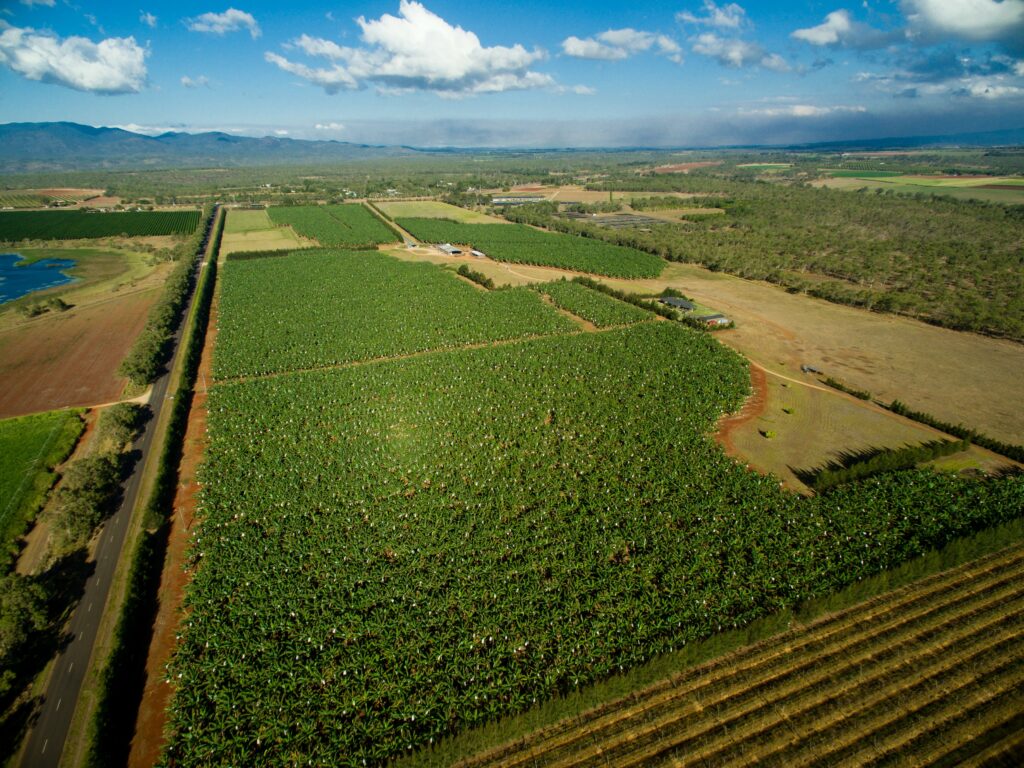
Fusarium wilt is caused by the fungal pathogen Fusarium oxysporum f. sp. cubense. The relevant races described in Australia are Race 1, Race 2, Subtropical Race 4 (SR4) and Tropical Race 4 (TR4) which have to do with their banana variety host range. Lady Finger is susceptible to Race 1, SR4 and TR4. Within the races there is another division known as Vegetative Compatibility Groups (VCGs) which is particularly helpful for correct identification purposes. The VCG present on the trial farms is identified as VCG 0124/5 which is grouped in Race 1. This is the same as in previous trial sites in NSW and the north Queensland wet coast and is the most prevalent VCG recovered from diseased Lady Finger in Australia.
In previous banana plant protection projects, Fusarium wilt Race 1 screening has occurred at a field site in the subtropics of NSW. But due to budgetary constraints in the current Hort Innovation project – ‘New varieties for Australian banana growers’ (BA21002), the feasibility of conducting such trials on cooperating grower’s properties is now being examined on the Atherton Tablelands. So, two potential cooperating growers, that had sufficient Fusarium wilt disease present in their Lady Finger plantations, were identified at Mareeba in April last year. Tissue culture plants of the required varieties had been multiplied, were grown on in the glasshouse at South Johnstone and field planting occurred in October/November (Figure 2).
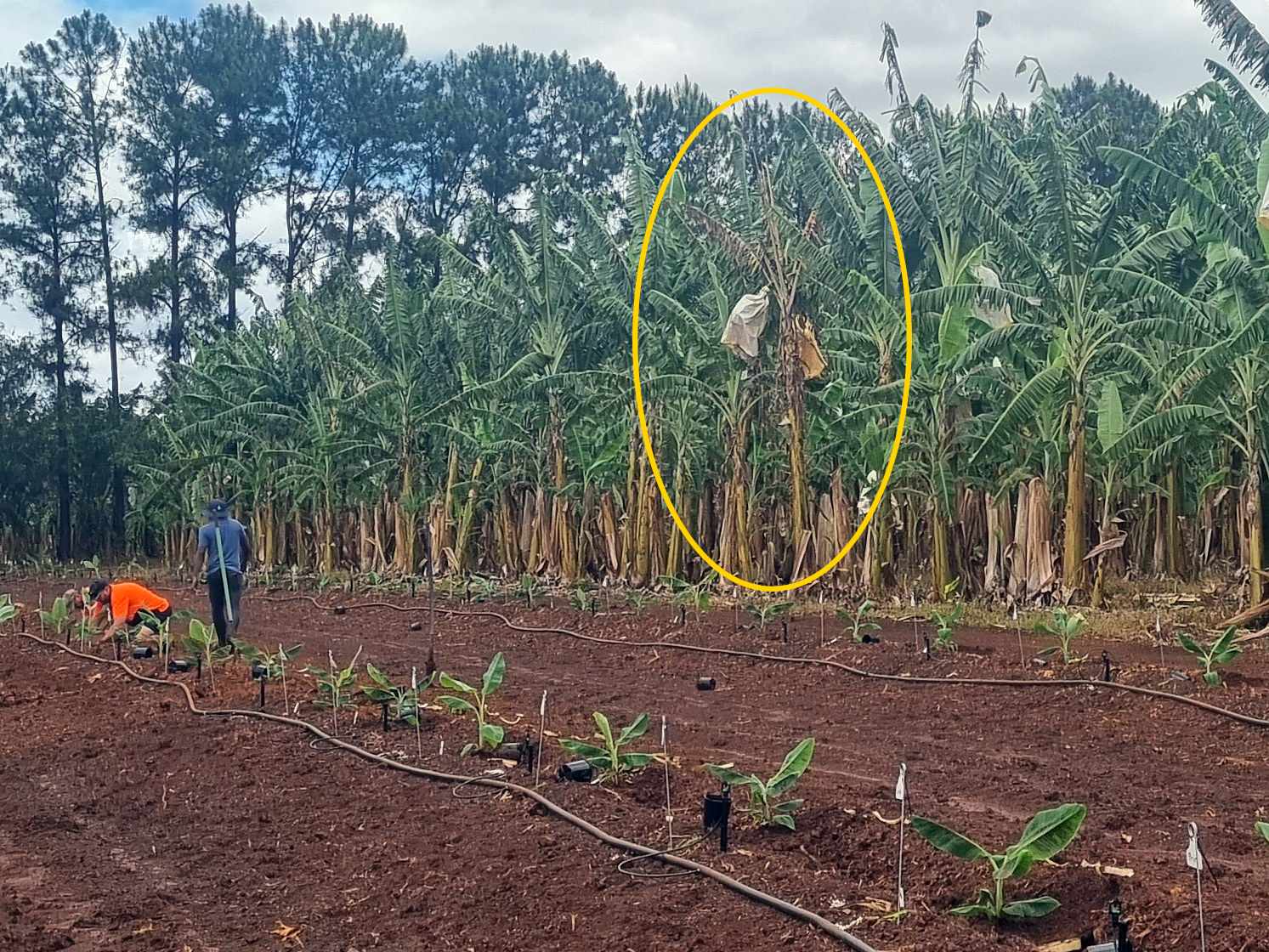
About the trial
Varieties
- SCS451 ‘Catarina’ reported to have tolerance to Race 1 in the Brazilian subtropics has been planted. It is certainly the one to watch. In our agronomic trial at South Johnstone it has performed well with bunches of SCS451 throwing well clear of the throat, not choking like what often occurs with Santa Catarina Prata, which we have had in Australia since the late 80s (see Figure 3).
- The four best tasting Goldfinger variants from the mutagenesis program have been included to confirm that they have retained resistance to Fusarium wilt Race 1.
- Three Lady Finger and Silk hybrids from the EMBRAPA program in Brazil are also being evaluated.
- As with other Fusarium wilt screening trials in the past we have included a few reference varieties with a range of known levels of disease reaction. They are the key to correct interpretation of results. It is not so much the absolute level of severity of disease present in the new varieties being tested, but rather how their level of disease severity compares with that of the reference varieties. Here we have included Dwarf Ducasse (very susceptible), Lady Finger (susceptible), High Noon (intermediate) and Goldfinger (resistant).

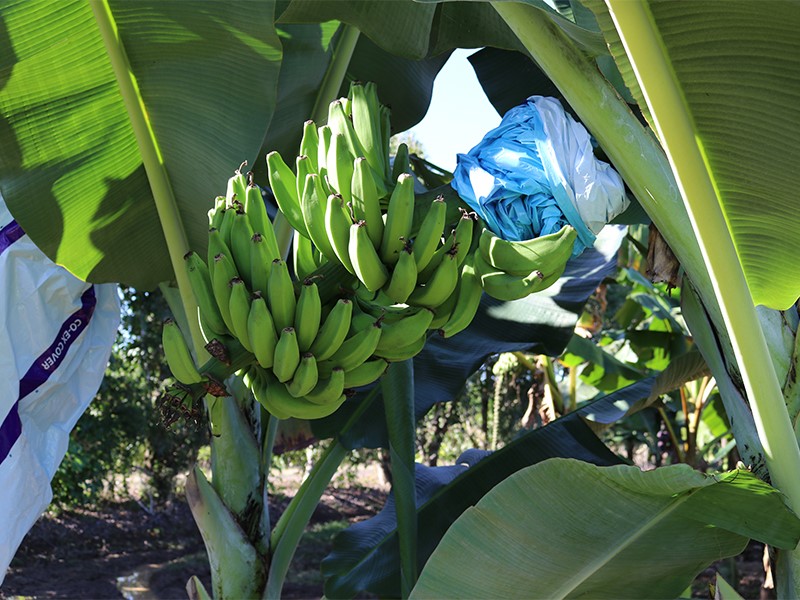
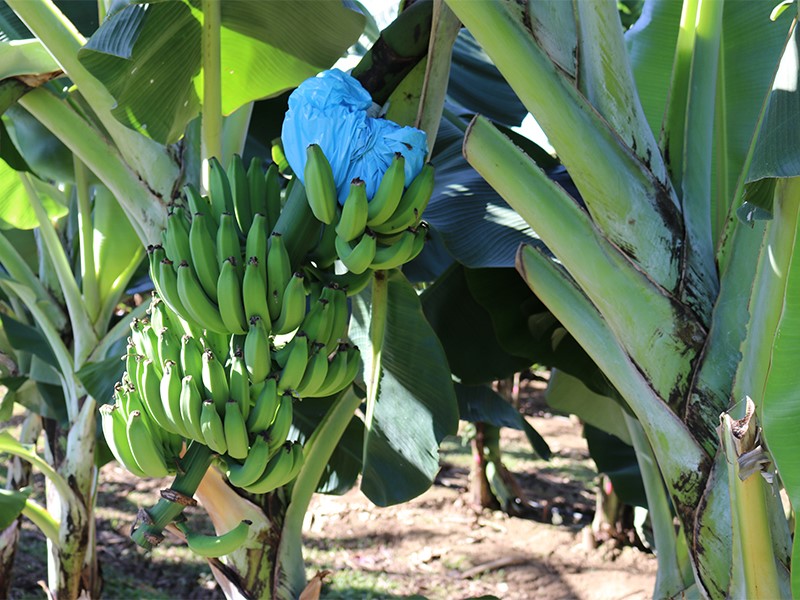
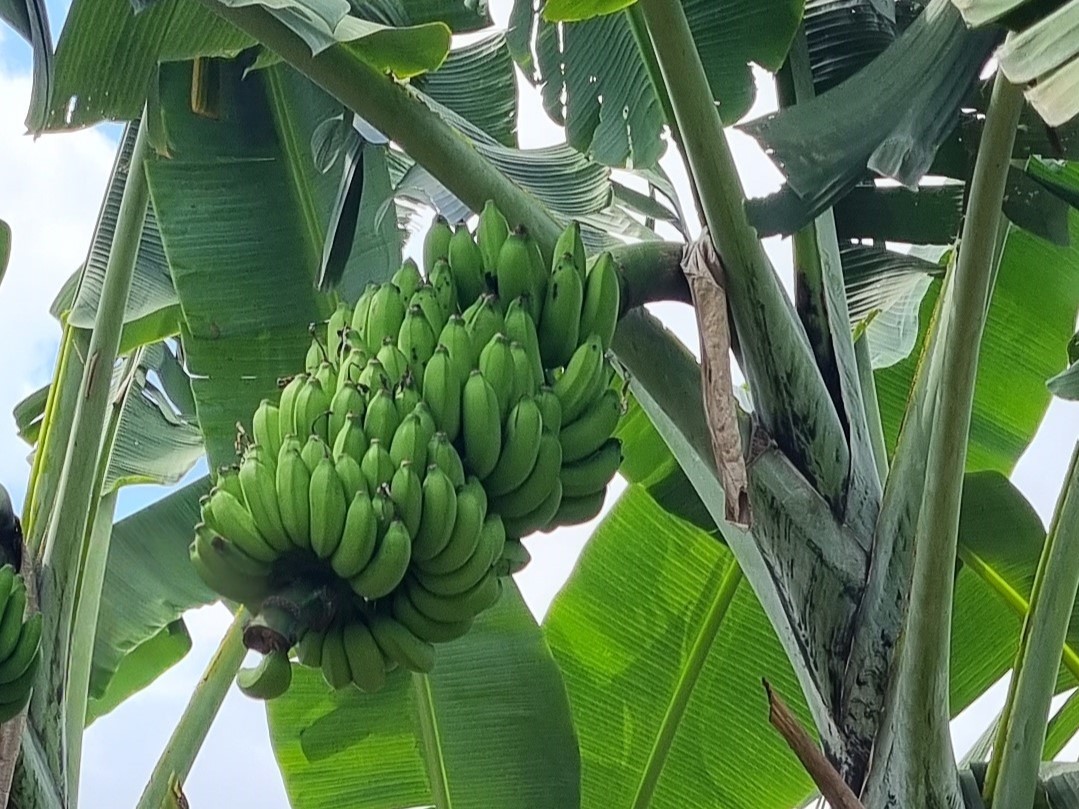
Disease inoculum
- The trials were established in locations on the farms where Fusarium wilt was fairly widespread. Additionally, diseased pseudostem disks (about 5 cm thick) obtained from nearby blocks on the farm were placed in the bottom of each planting hole (Figure 4). This was to help enhance the uniformity of distribution of the pathogen and ensure that the roots of each plant in the trial were in close proximity.
- The previous crop of Lady Finger on the sites was ‘knocked down’ in early/mid 2023 to allow for plant breakdown and cultivation of the rows prior to planting.
- When any variety becomes diseased, the plan is to confirm by laboratory testing that the symptoms are due to VCG 0124/5.
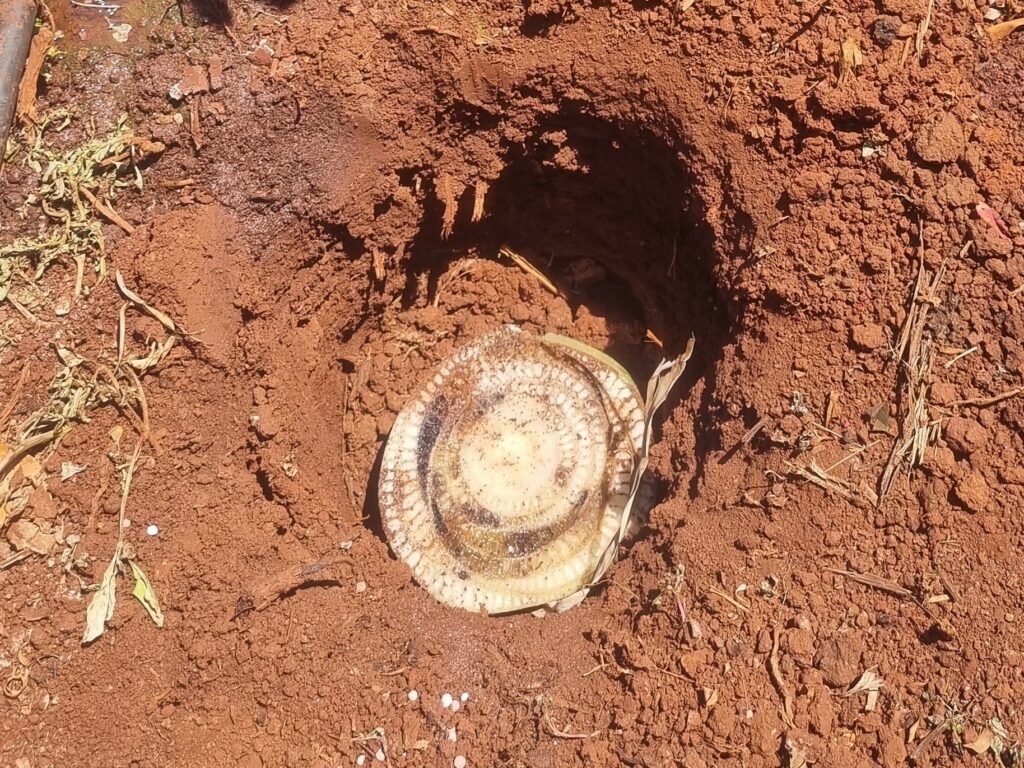
Trial progress
-
Disease ratings will get underway as soon as disease symptoms become evident which is expected in the next few months.
-
Disease development will be assessed in a plant and ratoon crop.
-
Hopefully, we will get good indications from the Tableland trials of the disease response of the varieties. Selected varieties could then be considered for inclusion later, in pre-commercialisation sites in NSW and elsewhere.
More information will be made available as the trial progresses.
This research has been funded as part of the project New varieties for Australian banana growers (BA21002), which is funded by Hort Innovation, using the banana industry research and development levies and contributions from the Australian Government. Hort Innovation is the grower-owned, not-for-profit research and development corporation for Australian horticulture. The Queensland Government has also co-funded the project through the Department of Agriculture and Fisheries.


